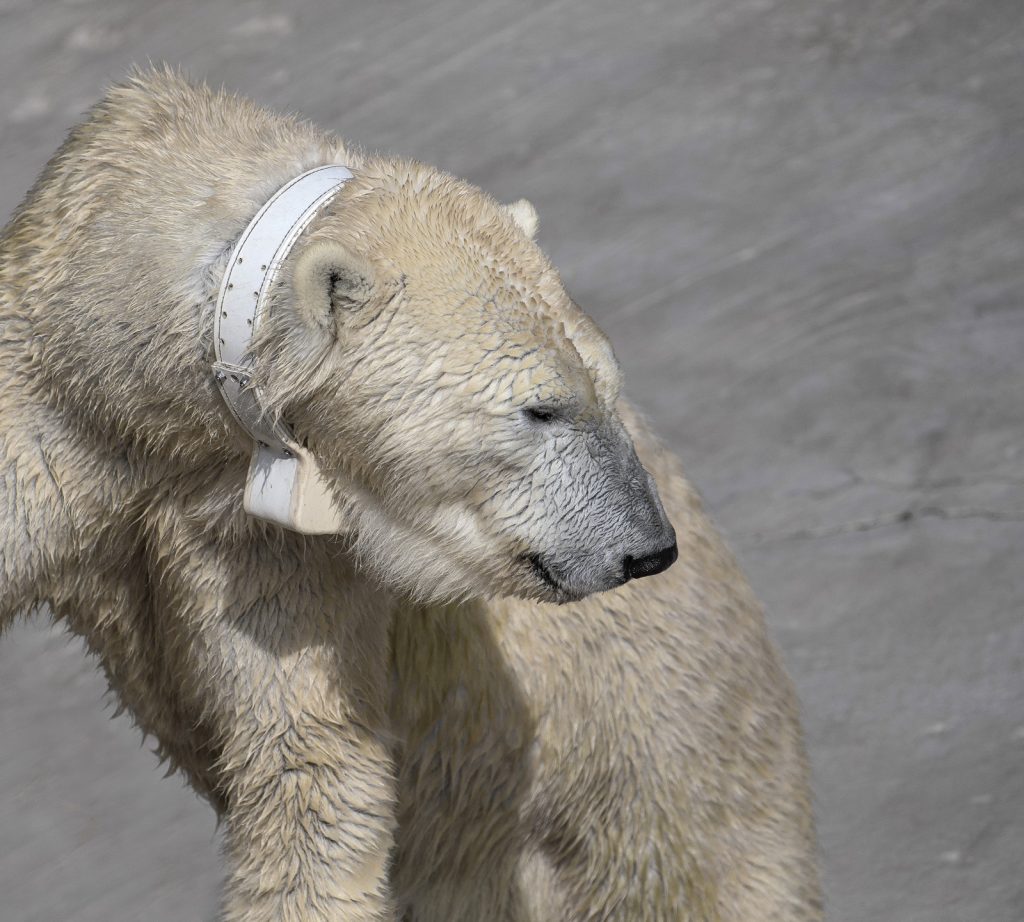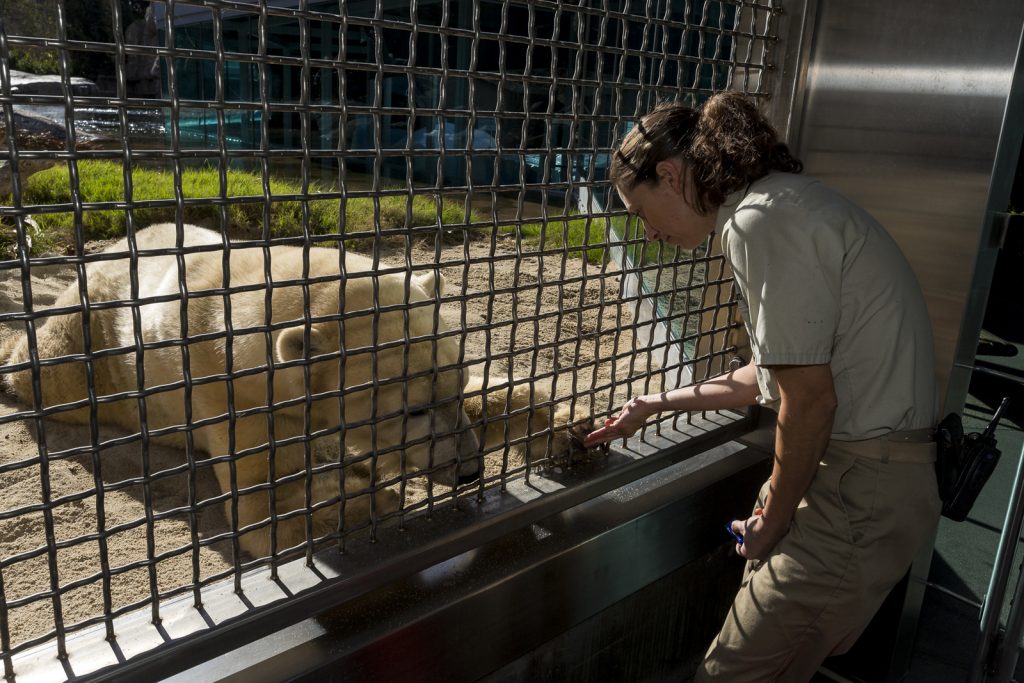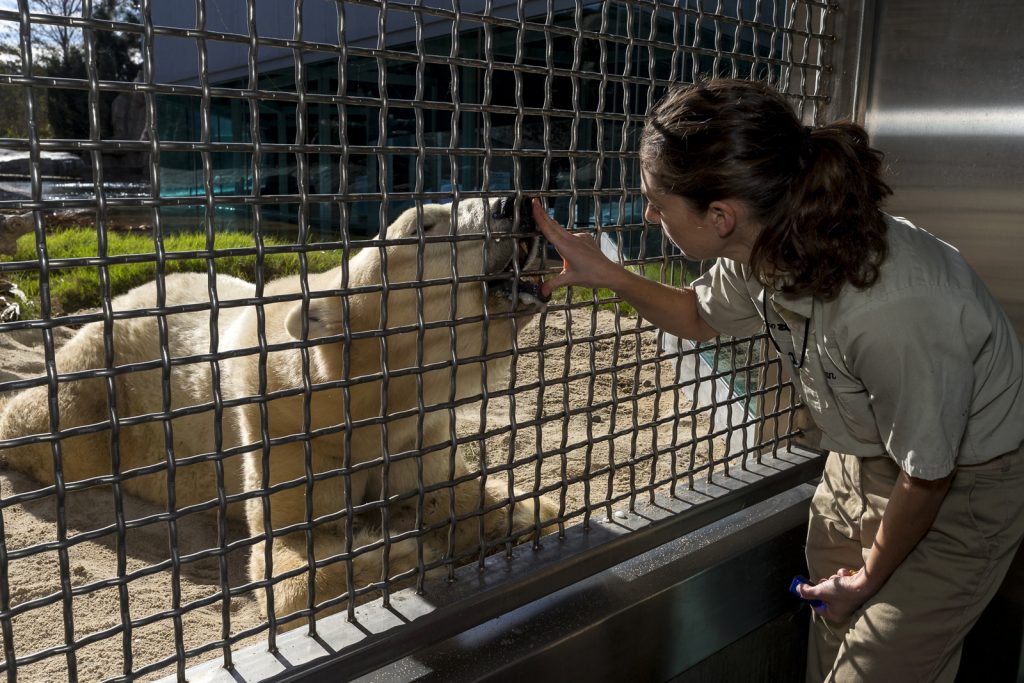Along with exploring their exhibit and showing off natural polar bear behaviors, the bears of the Zoo’s Conrad Prebys Polar Bear Plunge are also participating in research that could eventually help polar bears in the wild, and they are participating in their own health maintenance activities.
Tatqiq—the Zoo’s 580-pound, almost-16-year-old female—has learned how to wear an accelerometer collar—which works something like a giant Fitbit for polar bears, monitoring her movement and activity. The results are being used to create baseline readings for a typical, healthy polar bear that can be compared to readings from collars worn by polar bears in the Arctic, in a study being conducted with San Diego Zoo Global partners at the U.S. Geological Survey.
Tatqiq is also currently training to participate in a treadmill test. She is learning to become comfortable getting into the position and area where the test will be performed—preparing a few minutes every day for months, to eventually take part in a single 10-minute research session. The test will look at oxygen levels Tatqiq utilizes at different levels of exertion, to help researchers predict the long-term stamina of polar bears in the wild.

The accelerometer tracks Tatqiq’s activity on land as well as in the water (seen at the top of this post).
“The research will determine a healthy Zoo bear’s capacity for doing different things, so we can find out what polar bears in the wild are capable of doing,” explained Nate Wagner, senior keeper. “Can they swim even farther, or walk longer distances if they have to, to find food? All of this comes into play because the ice sheets where they hunt are vanishing. Polar bears can swim 30 miles in open ocean, but because of climate change, the resting places they go to after that long swim may not exist anymore. They need to find other resources.”
The Zoo’s polar bears can choose to participate in training for research, or not; and Tatqiq has enthusiastically participated. It took her only about a week to learn how to have an accelerometer collar put on or taken off. She is comfortable going into a crate or a testing enclosure, she has learned to present a paw for blood draws or medication, and she participates in her own health maintenance routine.

Using positive reinforcement training techniques, keepers are able to work closely with bears (and other animals in the zoo) to maintain health. Here, the keeper is checking the bear’s paws and claws.
Animals involved in training for husbandry behaviors need to meet a challenge to obtain a resource, similar to the way they would meet a challenge in the wild—like going hunting—in order to get a resource, Nate said. “All of our animals get the same amount of food, no matter whether they choose to participate in training or not; but participating in training brings extra rewards.”

Saying “ahhh” lets the keeper check the condition of the bear’s teeth and mouth.
The incentive of a tasty special treat means that polar bears are happy to participate in their own health management, and their ability to help keepers perform necessary tests avoids the need for sedation during routine procedures. “The extent to which they are willing to participate is phenomenal,” Nate said. “In one instance, we were able to do a biopsy on one of the female bears (she had a mass on her uterus that proved to be non-cancerous) with her full participation, with her backing up to the mesh wall to allow us to do the procedure.
“You’ve got to give our polar bears credit,” Nate added. “They do some behaviors here that they’ve never done in the wild—and their behavioral repertoire broadens every day.”
Eston Ellis is a staff writer for San Diego Zoo Global. Read his previous story, What’s New with the Three Bears?





